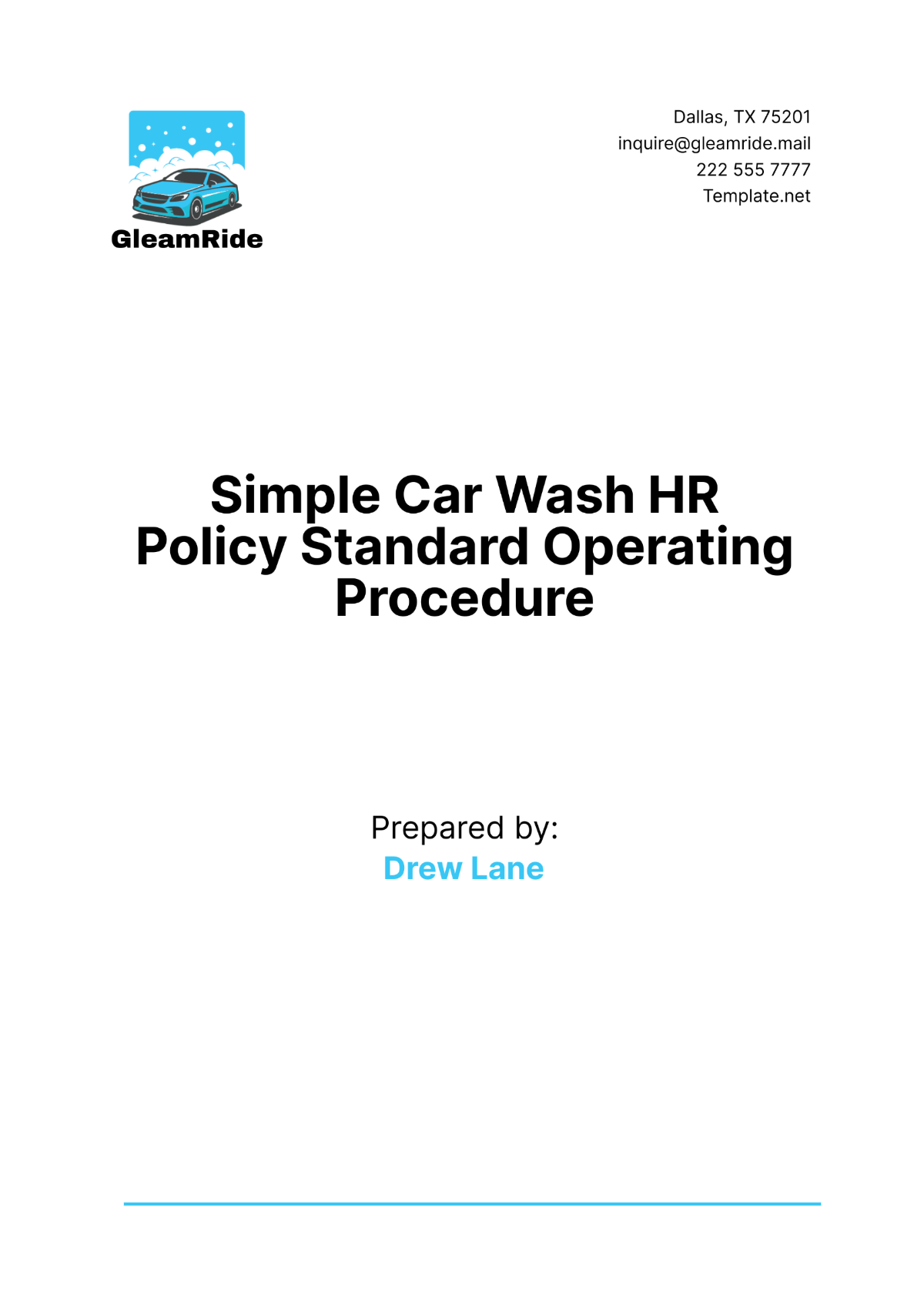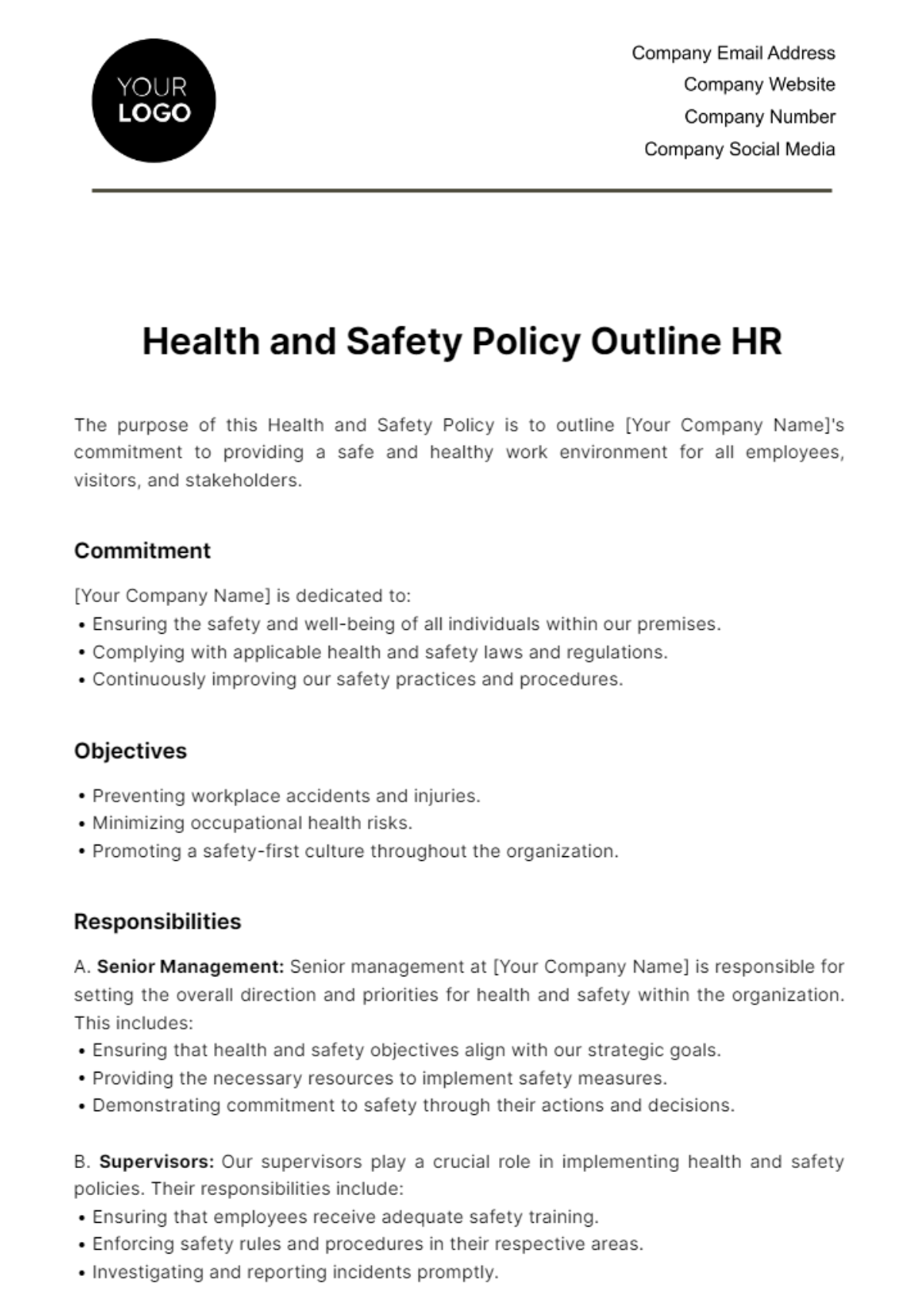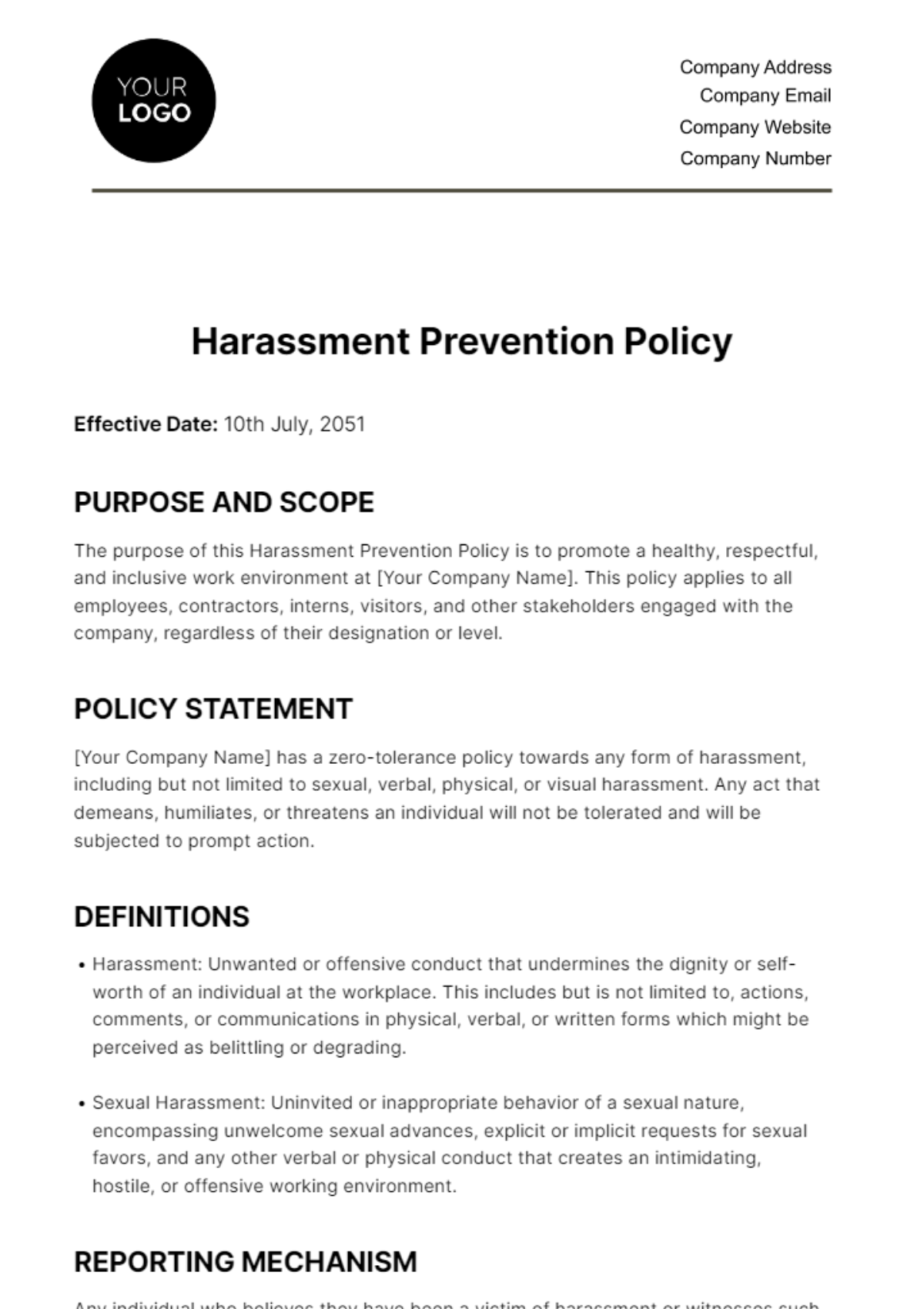Open-Door Policy Implementation and Monitoring Guide
TABLE OF CONTENTS
1. Introduction ...................................................................................................................4
2. Leadership Commitment ...............................................................................................4
2.1 Recognize the Value ....................................................................................................4
2.3 Communicate Benefits ................................................................................................5
2.3 Leadership Workshops ...............................................................................................5
3. Accessibility ..................................................................................................................5
3.1 Office Setup ................................................................................................................5
3.2 Office Hours ...............................................................................................................5
3.3 Digital Platforms .........................................................................................................5
3.4 Accessibility Guidelines ..............................................................................................5
3.5 Diverse Options ..........................................................................................................5
4. Adaptability ..................................................................................................................6
4.1 Clear Privacy Assurances ............................................................................................6
4.1.1 Policy Statement: ......................................................................................................6
4.1.2 Legal Compliance: ....................................................................................................6
4.2 Designated Contacts ..................................................................................................6
4.2.1 Confidentiality Pledge: .............................................................................................6
4.2.2 Limited Access: .......................................................................................................6
5. Feedback Handling .......................................................................................................6
5.1. Designated Contacts ..................................................................................................6
5.1.1 Appoint Responsible Parties: .....................................................................................6
5.1.2 Availability: ................................................................................................................7
5.2. Active Listening .........................................................................................................7
5.2.1 Empathetic Listening: ...............................................................................................7
5.2.2 Avoid Judgment: ......................................................................................................7
5.3. Documentation ...........................................................................................................7
5.3.1 Record Feedback: .....................................................................................................7
5.3.2 Secure Storage: .......................................................................................................7
6. Monitoring and Evaluation .............................................................................................7
6.1 Key Performance Indicators (KPIs) ..............................................................................7
6.1.1 Define KPIs: ...............................................................................................................7
6.1.2 Baseline Measurements: ...........................................................................................8
6.2 Regular Audits ............................................................................................................8
6.2.1 Periodic Audits: ........................................................................................................8
6.2.2 Audit Scope: ............................................................................................................8
6.3 Employee Surveys ......................................................................................................8
6.3.1 Feedback Surveys: ...................................................................................................8
6.3.2 Survey Analysis: .......................................................................................................8
7. Continuous Improvement ..............................................................................................8
7.1 Feedback Loop ............................................................................................................8
7.1.1 Employee Feedback: ..................................................................................................8
7.1.2 Anonymous Feedback: ..............................................................................................9
7.2. Data Analysis .............................................................................................................9
7.2.1 Feedback Analysis: ...................................................................................................9
7.2.2 Root Cause Identification: ........................................................................................9
7.3 Metrics and Key Performance Indicators (KPIs) ..........................................................9
7.3.1 KPI Review: ...............................................................................................................9
7.3.2 Adjust Metrics: .........................................................................................................9
8. Recognition and Appreciation .......................................................................................9
8.1. Recognition Programs .................................................................................................9
8.1.1 Program Development: ..............................................................................................9
8.1.2 Types of Recognition: ..............................................................................................10
8.2. Clear Criteria ............................................................................................................10
8.2.1 Define Criteria: ........................................................................................................10
8.2.2 Objectivity: .............................................................................................................10
8.3. Timely Recognition ...................................................................................................10
8.3.1 Timely Acknowledgment: ........................................................................................10
8.3.2 Regular Recognition: ..............................................................................................10
9. Communication Feedback ...........................................................................................10
9.1. Feedback Mechanisms ..............................................................................................10
9.1.1 Establish Feedback Channels: .................................................................................10
9.1.2 Anonymous Feedback: ............................................................................................11
9.2. Surveys .....................................................................................................................11
9.2.1 Communication Surveys: .........................................................................................11
9.2.2 Include Open-Ended Questions: .............................................................................11
9.3. Focus Groups ............................................................................................................11
9.3.1 Small Group Discussions: .........................................................................................11
9.3.2 Facilitator Guidance: ...............................................................................................11
10. Training and Support ..................................................................................................11
10.1. Training Programs ....................................................................................................11
10.1.1 Training Needs Assessment: ...................................................................................11
10.1.2 Customized Training: .............................................................................................11
10.2. Leadership Training .................................................................................................11
10.2.1 Leadership Workshops: .........................................................................................12
10.2.2 Active Listening: ...................................................................................................12
11. Conclusion .................................................................................................................12
1. Introduction
In the dynamic and rapidly evolving landscape of Information Technology (IT), fostering a workplace culture that prioritizes transparency, open communication, and employee engagement is not just a virtue but a strategic imperative. An Open-Door Policy is a foundational element of such a culture, empowering employees at all levels to voice their concerns, share ideas, and seek assistance without hesitation or fear of reprisal.
This detailed guide is designed to assist your [Company Name] in not only implementing an Open-Door Policy but also in establishing robust mechanisms for its ongoing monitoring and evaluation. By embracing an open-door culture, your organization can tap into the wealth of knowledge, creativity, and innovation within its workforce, ultimately leading to enhanced performance, improved job satisfaction, and a competitive edge in the IT industry.
This guide will take you through the essential steps, strategies, and best practices for successfully implementing and monitoring an Open-Door Policy within your [Company Name]. From gaining leadership commitment to fostering confidentiality, from handling feedback effectively to recognizing and appreciating employee contributions, each section will provide comprehensive insights and actionable recommendations.
As you embark on this journey to build a culture of transparency and open communication, remember that an Open-Door Policy is not merely a policy on paper but a living, breathing commitment that must be ingrained in the DNA of your organization. It is a testament to your company's dedication to nurturing its most valuable asset: its people.
2. Leadership Commitment
Before embarking on the journey of implementing and monitoring an Open-Door Policy in your [Company Name], securing an unwavering commitment from top-level leadership is paramount. Leadership commitment sets the tone for the entire organization and ensures the policy's success. Here is a detailed breakdown of the steps to secure leadership commitment:
2.1 Recognize the Value
Begin by acknowledging the significance of an Open-Door Policy in fostering a culture of transparency, collaboration, and employee engagement. Emphasize that such a culture can directly and positively impact the company's success.
2.3 Communicate Benefits
Clearly articulate the benefits of an Open-Door Policy, such as improved employee morale, enhanced problem-solving, increased innovation, and reduced turnover. Make it evident that this commitment aligns with the company's strategic goals.
2.3 Leadership Workshops
Conduct workshops or training sessions for top-level leaders, including executives, managers, and department heads, to educate them about the philosophy behind an Open-Door Policy. Share success stories from other organizations to illustrate the potential benefits.
3. Accessibility
Ensuring that your Open-Door Policy is accessible and approachable is crucial for its successful implementation in your [Company Name]. Accessibility means that employees at all levels should feel comfortable contacting leadership and expressing their concerns or ideas. Here's a detailed breakdown of how to make your Open-Door Policy accessible:
3.1 Office Setup
Encourage leaders to have an office setup that is physically inviting and open. This means keeping office doors open when not in confidential meetings or making it clear that employees can enter without an appointment.
3.2 Office Hours
Establish regular office hours during which leaders are available for drop-in visits. Make these hours known to all employees, and ensure they align with different shifts if applicable in your company.
3.3 Digital Platforms
In today's remote and hybrid work environments, it's essential to offer virtual accessibility. Use digital communication tools like video conferencing, chat platforms, or email to facilitate discussions between employees and leadership.
3.4 Accessibility Guidelines
Develop clear guidelines and communication materials that explain how employees can access leadership through various channels. This might include intranet articles, emails, or posters.
3.5 Diverse Options
Provide multiple channels through which employees can reach out. These could include one-on-one meetings, group discussions, suggestion boxes, anonymous reporting systems, or digital communication channels.
4. Adaptability
Maintaining confidentiality is a critical component of any Open-Door Policy in an [Company Name]. Employees must feel secure when sharing their concerns, ideas, or feedback, knowing that their information will be kept private and not used against them. Here's a detailed breakdown of how to ensure confidentiality in your Open-Door Policy:
4.1 Clear Privacy Assurances
4.1.1 Policy Statement:
Begin by clearly stating in the Open-Door Policy document that all communications made under the policy will be treated with the utmost confidentiality.
4.1.2 Legal Compliance:
Ensure that your Open-Door Policy complies with all relevant privacy laws and regulations, such as GDPR, HIPAA, or industry-specific data protection standards.
4.2 Designated Contacts
4.2.1 Confidentiality Pledge:
Designate specific individuals or teams responsible for handling Open-Door Policy communications and explicitly state their commitment to maintaining confidentiality.
4.2.2 Limited Access:
Limit access to the information to only those who need it to address the concerns or ideas effectively. Ensure that sensitive information is not shared beyond this scope.
5. Feedback Handling
Effectively handling feedback is a pivotal aspect of a successful Open-Door Policy in your [Company Name]. Employees must see that their concerns and ideas are being taken seriously and addressed promptly. Here's a detailed breakdown of how to handle feedback within your policy:
5.1. Designated Contacts
5.1.1 Appoint Responsible Parties:
Clearly designate specific individuals or teams responsible for handling Open-Door Policy communications. These individuals should be trained in effective feedback management and conflict resolution.
5.1.2 Availability:
Ensure that these designated contacts are readily available to receive feedback. Set clear expectations regarding their response times, such as acknowledging receipt of feedback within a specific timeframe (e.g., 24-48 hours).
5.2. Active Listening
5.2.1 Empathetic Listening:
Train designated contacts in empathetic listening techniques. This involves actively paying attention to the employee, demonstrating empathy, and asking clarifying questions to understand the issue fully.
5.2.2 Avoid Judgment:
Stress the importance of suspending judgment while listening to feedback. The goal is to create a safe space where employees feel heard and valued.
5.3. Documentation
5.3.1 Record Feedback:
Maintain detailed records of all feedback received, including the date, the employee's identity (if not anonymous), the nature of the feedback, and any actions taken in response.
5.3.2 Secure Storage:
Store feedback records securely to protect employee confidentiality while ensuring accessibility to authorized personnel responsible for addressing the issues.
6. Monitoring and Evaluation
Monitoring and evaluating your Open-Door Policy implementation is crucial to ensure that it remains effective, meets its objectives, and continues to support a culture of transparency and open communication within your [Company Name]. Here's a detailed breakdown of how to monitor and evaluate the policy:
6.1 Key Performance Indicators (KPIs)
6.1.1 Define KPIs:
Establish key performance indicators that align with the goals of your Open-Door Policy. These could include metrics such as the number of feedback submissions, response times, employee satisfaction scores, or the resolution rate of submitted issues.
6.1.2 Baseline Measurements:
Collect baseline data to measure against as a reference point for improvement. This data can help you track progress over time.
6.2 Regular Audits
6.2.1 Periodic Audits:
Conduct regular audits of the Open-Door Policy's implementation to ensure compliance with established guidelines. Audits can be scheduled quarterly, semi-annually, or annually.
6.2.2 Audit Scope:
Assess not only the policy itself but also the feedback-handling process, confidentiality measures, accessibility, and leadership commitment. Identify areas where improvements may be needed.
6.3 Employee Surveys
6.3.1 Feedback Surveys:
Administer employee satisfaction surveys to gather feedback specifically related to the Open-Door Policy. Use anonymous surveys to encourage honest responses.
6.3.2 Survey Analysis:
Analyze survey results to identify trends and areas for improvement. Pay attention to feedback regarding the accessibility, confidentiality, and effectiveness of the policy.
7. Continuous Improvement
Continuous improvement is an integral part of maintaining the effectiveness of your Open-Door Policy in your [Company Name]. By regularly assessing and refining the policy and its associated processes, you can adapt to changing needs and foster a culture of continuous growth and openness. Here's a detailed breakdown of how to facilitate continuous improvement:
7.1 Feedback Loop
7.1.1 Employee Feedback:
Encourage employees to provide feedback on their experiences with the Open-Door Policy regularly. Create channels for employees to share their thoughts, suggestions, and concerns about the policy's effectiveness.
7.1.2 Anonymous Feedback:
Allow employees the option to provide feedback anonymously if they are uncomfortable sharing openly. Ensure that anonymity is maintained and respected.
7.2. Data Analysis
7.2.1 Feedback Analysis:
Regularly analyze the feedback collected through the Open-Door Policy. Look for recurring themes, common issues, or emerging trends that may require attention.
7.2.2 Root Cause Identification:
When analyzing feedback, aim to identify the root causes of issues rather than addressing only the symptoms. This will enable more effective and lasting solutions.
7.3 Metrics and Key Performance Indicators (KPIs)
7.3.1 KPI Review:
Continuously monitor the KPIs established for the Open-Door Policy. Compare current performance with baseline measurements and targets to identify areas that need improvement.
7.3.2 Adjust Metrics:
If necessary, adjust your KPIs to better align with the evolving goals and objectives of the policy. Ensure that your metrics remain relevant and actionable.
8. Recognition and Appreciation
Recognition and appreciation are essential components of an effective Open-Door Policy in your [Company Name]. Acknowledging and celebrating the contributions of employees who actively participate in the policy can boost morale, motivate others to engage, and reinforce the culture of openness. Here's a detailed breakdown of how to establish a robust recognition and appreciation system:
8.1. Recognition Programs
8.1.1 Program Development:
Design and implement recognition programs specifically tailored to the Open-Door Policy. These programs should focus on acknowledging employees who provide valuable feedback, innovative ideas, or constructive suggestions.
8.1.2 Types of Recognition:
Consider various forms of recognition, such as verbal praise, written commendations, certificates, or tokens of appreciation (e.g., gift cards, merchandise).
8.2. Clear Criteria
8.2.1 Define Criteria:
Clearly define the criteria for recognition. Specify what actions or contributions are eligible for recognition under the Open-Door Policy.
8.2.2 Objectivity:
Ensure that the criteria are objective and transparent, preventing any perception of favoritism or bias.
8.3. Timely Recognition
8.3.1 Timely Acknowledgment:
Recognize and appreciate employees promptly after their contributions are made. Timeliness enhances the impact of the recognition.
8.3.2 Regular Recognition:
Establish a regular schedule for recognizing employees to ensure that contributions are acknowledged consistently.
9. Communication Feedback
Effective communication is central to the success of your Open-Door Policy in your [Company Name]. Gathering feedback on how well the policy is facilitating communication, and making necessary improvements based on this feedback, is essential for ongoing success. Here's a detailed breakdown of how to collect and utilize communication feedback:
9.1. Feedback Mechanisms
9.1.1 Establish Feedback Channels:
Create specific channels or platforms for employees to provide feedback about the Open-Door Policy's communication aspects. This could include surveys, suggestion boxes, email, or dedicated communication tools.
9.1.2 Anonymous Feedback:
Allow employees the option to provide feedback anonymously if they prefer not to disclose their identity. Ensure that anonymity is maintained.
9.2. Surveys
9.2.1 Communication Surveys:
Conduct periodic surveys focused on assessing communication effectiveness within the Open-Door Policy. Include questions related to accessibility, responsiveness, and clarity.
9.2.2 Include Open-Ended Questions:
Incorporate open-ended questions to encourage employees to share detailed feedback and suggestions for improvement.
9.3. Focus Groups
9.3.1 Small Group Discussions:
Organize focus groups or discussion sessions with a diverse group of employees to delve deeper into communication-related issues. Encourage candid conversations and idea sharing.
9.3.2 Facilitator Guidance:
Appoint skilled facilitators to lead these discussions and ensure that they stay on topic, productive, and respectful.
10. Training and Support
10.1. Training Programs
10.1.1 Training Needs Assessment:
Conduct an initial assessment to identify the specific training needs related to the Open-Door Policy. Determine which groups or individuals require training.
10.1.2 Customized Training:
Develop training programs tailored to different audience groups, including employees, managers, HR personnel, and designated contacts responsible for handling feedback.
10.2. Leadership Training
10.2.1 Leadership Workshops:
Offer specialized training sessions for leaders and managers on the principles and best practices of the Open-Door Policy. Focus on leadership's role in fostering an open and inclusive culture.
10.2.2 Active Listening:
Include training modules on active listening, empathy, conflict resolution, and effective communication skills for leaders. These skills are essential for successfully implementing the policy.
11. Conclusion
The successful implementation of an Open-Door Policy in your [Company Name] is a journey that requires careful planning, commitment, and ongoing effort. This comprehensive guide has provided you with a detailed roadmap to create, launch, and sustain an Open-Door Policy that fosters transparency, open communication, and employee engagement.
Throughout this guide, you've learned about the critical steps and components necessary for a successful Open-Door Policy, including:
Introduction: Setting the stage for the policy's rollout by clearly articulating its purpose and benefits to employees and leadership.
Leadership Commitment: Ensuring that leaders at all levels of the organization are committed to actively participating in the policy and setting a positive example for their teams.
Confidentiality: Establishing safeguards to protect the privacy and confidentiality of employees who utilize the policy.
Feedback Handling: Developing a structured process for receiving, analyzing, and responding to employee feedback and concerns effectively.
Monitoring and Evaluation: Continuously assessing the policy's performance through metrics, audits, and feedback to make data-driven improvements.
By following these steps and implementing the best practices outlined in each section, you can create an Open-Door Policy that not only meets its intended objectives but also nurtures a workplace culture characterized by trust, transparency, and collaboration.
Remember that the Open-Door Policy is a living initiative that should evolve with your company's changing needs and the feedback received from employees. Regularly review and update the policy, training programs, and support systems to ensure they remain effective and relevant.

















































